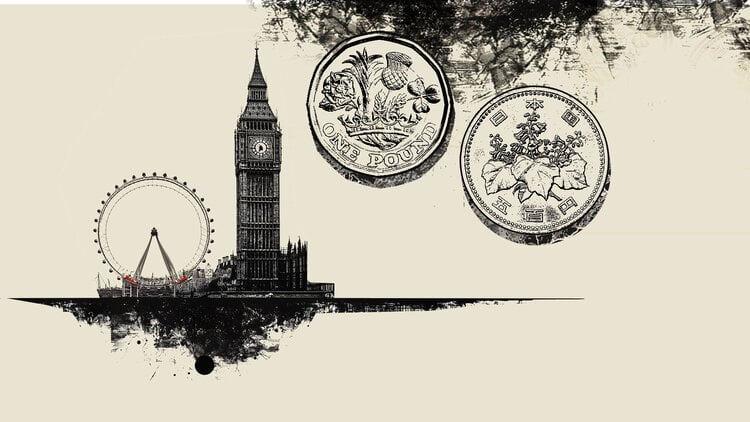- The Canadian dollar remains afloat after a long weekend.
- For its part, crude oil continues to decline, which takes away momentum from the CAD.
- Markets’ attention remains focused on the geopolitics of the Gaza Strip.
He Canadian dollar (CAD) trades flat against US dollar (USD) during Tuesday’s session, with minor movements at the upper and lower extremes. The pair made a low at 1.3569 before bouncing to 1.3617 and now testing levels below 1.3580.
Economic data from Canada remains sparse for the week’s release schedule, leaving the CAD exposed to US dollar flows and broader investor sentiment.
Markets’ attention remains focused on the escalation in the Gaza Strip following Israel’s response to Hamas rocket attacks over the weekend. Investors are watching for any geopolitical fallout from the conflict between Israel and Hamas that spills over into neighboring Middle East countries.
Daily summary of market movements: Canadian dollar with little momentum for Tuesday
- The Canadian dollar remains stable during the trading session on Tuesday.
- Crude oil retreats gently, keeping the CAD limited.
- Broad market sentiment is cautiously recovering following the weekend’s geopolitical escalation.
- USD/CAD traders will be keeping an eye on Wednesday’s US Producer Price Index (PPI) numbers, which are expected to show a slight year-on-year increase of 2.2% to 2.3%.
- Inflation remains a major focus for markets as investors wait for signs that the US Federal Reserve (Fed) will be forced to cut rates sooner than expected.
- US Consumer Price Index (CPI) figures will be released on Thursday, with markets expecting a month-on-month decline of 0.6% to 0.3%.
- The rise in the price of crude oil in reaction to the conflict in the Gaza Strip is unlikely to cause long-term movements.
- Suppliers to the oil market are struggling to meet global demand, but the huge excess reserves of refined gasoline are putting downward pressure on prices.
Technical Analysis: Canadian Dollar posts minor gains, USD/CAD declines from 1.36
The USD/CAD pair is testing lower, but still firmly planted between Tuesday’s high and low, although a small rally for the Canadian Dollar is causing the pair to trim pips from the 1.3600 level.
The Canadian Dollar pair fell below the 200-hour SMA near 1.3640 in trading on Monday, and the pair is struggling to develop a rebound.
Daily candlestick charts show the USD/CAD pair lower for three consecutive days, falling almost 1.5% from the last high at 1.3785, and a continuation of the decline would lead the pair to challenge the 50-day SMA near 1.3536.
Frequently Asked Questions about the Canadian Dollar
What factors determine the price of the Canadian dollar?
The key factors driving the Canadian Dollar (CAD) are the level of interest rates set by the Bank of Canada (BoC), the price of oil, Canada’s largest export, the health of its economy, inflation and trade balance, which is the difference between the value of Canada’s exports versus its imports. Other factors are market sentiment, that is, whether investors are betting on riskier assets (risk appetite) or looking for safe havens (risk aversion), with risk appetite being positive for the CAD. As a major trading partner, the health of the US economy is also a key factor influencing the Canadian dollar.
How do the decisions of the Bank of Canada influence the CAD?
The Bank of Canada (BoC) significantly influences the Canadian Dollar by setting the level of interest rates that banks can lend to each other. This influences the level of interest rates for everyone. The BOC’s main objective is to keep inflation between 1% and 3% by adjusting interest rates up or down. Relatively higher interest rates are usually positive for the CAD. The Bank of Canada can also use quantitative easing and tightening to influence credit conditions, with the first being negative for the CAD and the second being positive for the CAD.
How does the price of oil influence the Canadian dollar?
The price of oil is a key factor influencing the value of the Canadian Dollar. Oil is Canada’s largest export, so the price of oil tends to have an immediate impact on the value of the CAD. Generally, if the price of oil rises, the CAD also rises, as aggregate demand for the currency increases. The opposite occurs if the price of oil falls. Higher oil prices also tend to result in a higher probability of a positive Balance of Trade, which is also support for the CAD.
How does inflation data influence the value of the Canadian Dollar?
Although inflation has traditionally always been considered a negative factor for a currency, as it reduces the value of money, the opposite has actually happened in modern times with the relaxation of cross-border capital controls. Inflation tends to lead central banks to raise interest rates, which attracts more capital from international investors looking for a lucrative place to store their money. This increases the demand for the local currency, which in the case of Canada is the Canadian Dollar.
How does economic data influence the value of the Canadian dollar?
Macroeconomic data releases measure the health of the economy and can influence the Canadian dollar. Indicators such as GDP, manufacturing and services PMIs, employment and consumer sentiment surveys can influence the direction of the CAD. A strong economy is good for the Canadian dollar. Not only does it attract more foreign investment, but it may encourage the Bank of Canada to raise interest rates, resulting in a stronger currency. However, if economic data is weak, the CAD is likely to fall.
Source: Fx Street
I am Joshua Winder, a senior-level journalist and editor at World Stock Market. I specialize in covering news related to the stock market and economic trends. With more than 8 years of experience in this field, I have become an expert in financial reporting.







